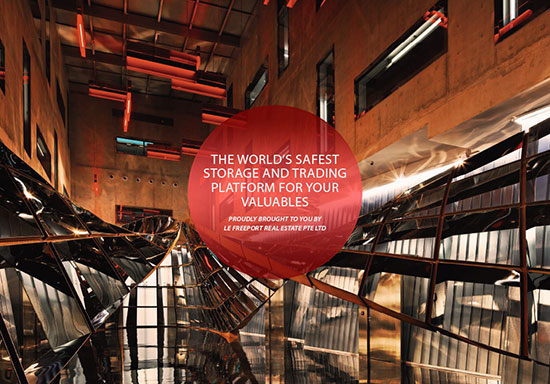In the March issue of e-flux journal, Stefan Heidenreich argues that post-internet art is troublingly (if perhaps unwittingly) conducive to an era of “freeportism,” in which it’s more lucrative for billionaire collectors to keep their art-assets in tax-free warehouses than put it on display for the public. An excerpt:
It is safe to say, however, that never before now have so many artworks been produced to remain hidden, all enclosed in disenchanted wooden boxes, suspended in a permanent circuit of exchange, in a place called a “freeport” because it is free of customs duties and taxes of all kinds. Since no one is allowed to see the art, it is also free of audience and spectators, an anti-theatron; it is a place of un-seeing. We must examine the conflict between the forces that create new ways of representing and being seen, and the relations that just as quickly place these out of sight…
The term “post-internet” did not spread because it was well defined. On the contrary, its ambivalence and its openness allowed it to resonate widely. Its prefix “post-” is borrowed from notions like the “postmodern” or the “post-digital.” “Post-” used to mean “after,” but now it also includes “beyond” and “deriving from.” It confirms and denies at the same time, exerting a kind of double bind. It says: we belong to the internet, knowing that the internet is over. We are digital, but it does not matter, because that is just what everybody is. “Post-” also presumes to know the border of something: post-internet means we believe that the end of the event called “the internet” is somewhere in sight, in the same way that postmodernism served first of all to consolidate modernism into something we could have conceivably moved beyond.
Post-internet represents the latest episode in the long trajectory of artistic responses to shifts in the forces of representation and the evolution of media technology. We can characterize these responses in one of four ways: 1) the aforementioned metaphorical appropriation; 2) “technologism”; 3) tech-derived projects and practices, or “derivatives”; and 4) tech-related projects and practices, or “relatives.”
Image: An ad exhibits the chrome high-tech interior of a freeport art storage facility in Singapore.
